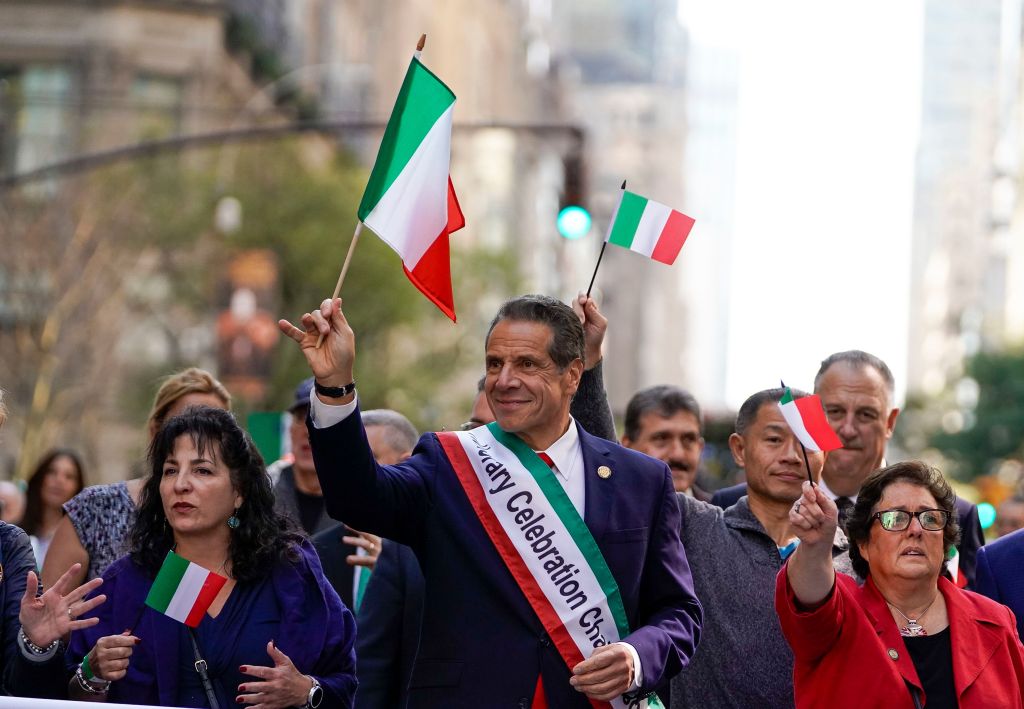[ad_1]
In December, New York Governor Andrew Cuomo announced that he would build a statue of a Catholic saint in Battery Park City. Neighborhood residents have greeted the project with an outcry, however, with many saying there’s no space for the $750,000 monument.
New York’s top politicians continue to find themselves ensnared in what has become a months-long controversy surrounding the omission of Mother Cabrini, a Catholic saint of immigrants, from the city’s monuments initiative honoring historical women. Last year, critics from the Italian-American community blamed Mayor Bill de Blasio and his wife Chirlaine McCraine for the snub, but a solution seemed to appear in December when Cuomo announced that he would build a monument for the sacred nun in Battery Park City with state funds.
The revised funding plan offered a new solution—or, potentially, a new problem. Residents of Manhattan’s southernmost district claim that they were not consulted on the governor’s decision to erect the statue, and local officials are worried that the $750,000 statue will cramp an already crowded corner of the city with a monument they never asked for. Some have even alleged that the statue will be paid for using money desperately needed for the conservation of nearly a dozen other memorials in the area.
Battery Park City is owned and managed by a state corporation, meaning that the governor does not require approval from City Hall when it appropriates land for use. That arrangement makes the neighborhood a place where Cuomo can bypass political squabbles, and state officials have a long record of vetoing the concerns of local residents and ignoring upkeep concerns in favor of scoring points with their constituencies. In 2002, New York’s former governor, George Pataki, opened the Irish Hunger Memorial in the neighborhood, despite the area having little to no connection with the Irish-American community. One year after the $5 million memorial opened, it temporarily closed because of a water infiltration issue that was not completely fixed until another $5.3 million was spent on repairs in 2017.
Cuomo’s slate of planned monuments and memorials in Battery Park has little connection to the site’s history or residents. It includes the Mother Cabrini statue, which would thematically overlap with the neighborhood’s Immigrants (1983) sculpture by artist Luis Sanguino; a proposed expansion of the city’s Museum of Jewish Heritage that has not yet been detailed; and the planned $700,000 Hurricane Maria memorial honoring survivors and victims of the storm.
Some Battery Park residents have alleged that, in spending money on these projects, officials are out of touch with the surrounding community. Ninfa Segarra, a neighborhood resident who once served as Deputy Mayor, and more recently chaired the Battery Park City Committee of Community Board 1, told Broadsheet Daily that, “as one of the few Puerto Ricans who live in Battery Park City, I think placing a memorial here is ridiculous. The governor should identify who in the Puerto Rican community asked that it be placed here.”
For some, the controversy builds on recent public art scandals involving the de Blasio administration’s She Built NYC campaign and the J. Marion Sims replacement statue. New Yorkers are once again failing to have their say in the public art process, and there’s little transparency from Cuomo’s office about how and why Battery Park was chosen for the Cabrini statue. (A spokesperson did not respond to requests for comment from ARTnews.)
Decisions like these create short-term political victories with long-term impacts on residents and taxpayers. Battery Park City already requires costly maintenance for nearly a dozen public artworks that the state says is valued at approximately $63 million. Last year’s budget for the neighborhood included $2.5 million to redesign the Police Memorial, $3 million to repaint the Tribeca Pedestrian Bridge, and $1.6 million for design and installation of way-finding signage.
Experts on memorials also say that such a disregard for the context of a statue can severely weaken its impact on visitors and obfuscate its meaning. Mother Cabrini became a naturalized U.S. citizen in 1909 and was canonized as St. Frances Xavier Cabrini in 1946 by Pope Pius XII as the patron saint of immigrants. She established 67 different institutions including hospitals, schools, and churches that bear her name. She is already memorialized in New York with a park in Brooklyn, a health foundation in midtown, and a shrine uptown near the Cloisters in addition to multiple street names, churches, and parishes throughout the city. None of her achievements had much to do with Battery Park City, however.
“Site determines the content or at the very least frames a work.” Harriet Senie, an art historian who has written multiple books on public art, told ARTnews. “For a memorial to resonate or even make sense, its site should relate to something that the subject did or is associated with. I can’t imagine Mother Cabrini had anything to do with Battery Park City.”
[ad_2]
Source link

